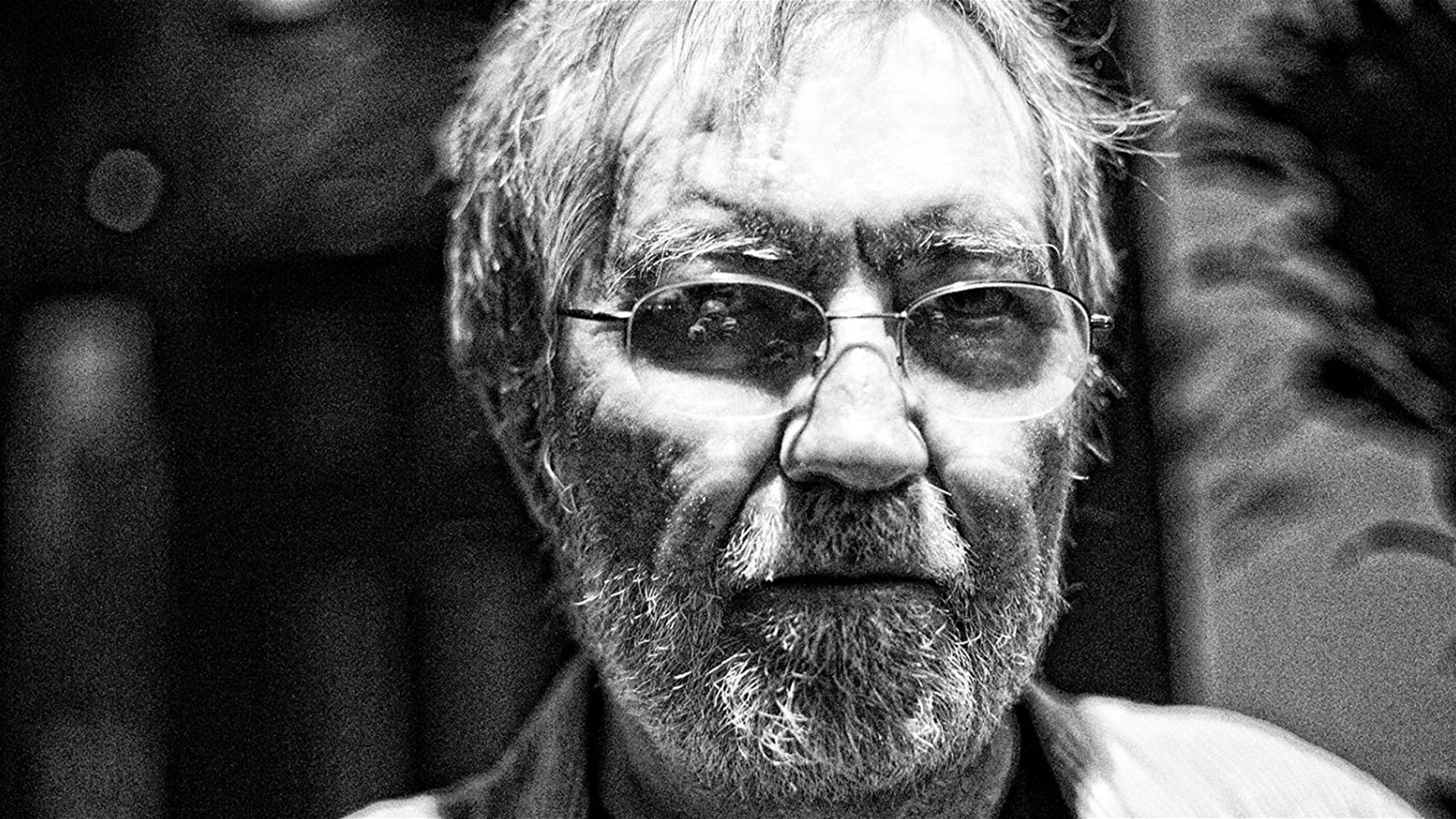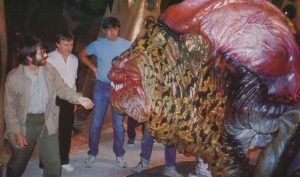Just over a month after Dawn Of The Dead director George Romero passed away, another horror master left us. Tobe Hooper died late Saturday night. He was 74. It was reported that he died of natural causes. Back in 1974, Hooper changed horror films forever when he unleashed The Texas Chainsaw Massacre into the world. For the ensuing decade, he remained one of the most wildly unpredictable and ghoulishly creative filmmakers in the genre. Like so many directors who came to prominence in the artist-driven realm of 70s filmmaking, Hooper struggled to find a place in the industry after an immensely successful early run. Yet he left a mark on the psyches of horror fans worldwide that was so deep, he’ll never be forgotten.
Born in Austin in 1943, the eccentric Texan took his time to climb into the director’s chair. He worked as a college lecturer and documentary cameraman throughout the 60s and also, happily, became a hippy. His first feature was the rarely screened Eggshells in 1968, a surreal hippy freak out film clearly inspired by the drugs and culture that surrounded Hooper during his formative years. There were a handful of creepy scenes within that cinematic acid trip, but nothing that would prepare viewers for what Hooper dreamed up next. One day Hooper found himself trapped in a department store line imagining how he could cut through the crowd of shoppers. His eyes slowly wandered over to a chainsaw and a genre legend was born.
To this day The Texas Chainsaw Massacre remains one of the most gruellingly terrifying and brilliantly constructed horror films ever made. Loosely inspired by serial killer Ed Gein (who also inspired Norman Bates and Hannibal Lector), Hooper created a cinematic nightmare about a cannibal family in the back roads of Texas. His heroes were hippy kids stumbling into the disillusionment of the 70s. His villains were a twisted family who loved each other almost as much as they love the taste of meat (any meat). His cinematic techniques mixed classic suspense and shock film grammar with documentary film grain, intimacy, grit, and realism. The movie was unrelenting, yet surprisingly devoid of gore. Its shocks didn’t come from of onscreen violence, but the unrelenting psychological torment, distressingly realistic staging, searing sound design, eerily relatable characters, and strong acting. Plus, there was Leatherface, an instant horror icon who inspired countless nightmares and way too much merchandise.
The cast and crew almost went insane making the film over a particularly hot Texas summer. That experience bled into the film. Audiences were rocked like few other horror films before or since. The indie feature was a massive hit. No one will ever know how much it made though because the Deep Throat distributor that released the flick was owned by the mob and didn’t keep clean books. The horror classic is estimated to have made anything from thirty to one hundred and fifty million dollars in grindhouses and drive-ins throughout the 70s. The influence of The Texas Chainsaw Massacre on nihilistic 70s horror and the 80s slasher boom can’t be overstated. It is iconic like few other films. Sure, Tobe Hooper never topped his debut, but it’s also hard to say if any other horror director topped it either.
The success of The Texas Chainsaw Massacre got Hooper to Hollywood, but the exploitation flick’s notoriety prevented him from jumping straight into the studio system. His first follow up feature was the sleazy drive in thriller, Eaten Alive, that Hooper transformed into a stylized dark comedy and got fired from the production for his oddball ideas (the final product is still very much worth watching though, and features a pre-Freddy Kruger Robert Englund in a memorable role). After that, Hooper went to television with a mini-series adaptation of Stephen King’s small town vampire classic Salem’s Lot. An expertly crafted work of slow burn atmospheric chills, the TV movie was a massive hit filled with instantly iconic set pieces and spawned a whole series of Stephen King TV mini-series that continued for decades.
Salem’s Lot, due to its large success, got Hooper his first Hollywood directing gig in 1981’s The Funhouse. The early slasher movie about a group of teens who sneak into a State Fair funhouse at night could have been a generic effort, but Hooper had bigger ideas. He transformed the simple slasher into an homage to classic Universal Monster movies and filled the movie with cinematic in-jokes and self-aware references over a decade before Scream made that the norm. Hooper also took full advantage of his first Hollywood budget to create a gorgeously stylized horror playground filled with scares and images so striking that the next person to hire him to direct a feature was none other than Steven Spielberg.
Poltergeist is Tobe Hooper’s second most famous film and his most controversial directing credit. Steven Spielberg co-wrote the script, produced, and originally intended to direct himself. He hired Hooper only because the production of E.T. overlapped with Poltergeist and not even Stevie Wonder could make both movies at once. As a result, the film’s legacy has been tainted by rumours that Spielberg ghost directed. That always seemed unfair. Sure Spielberg’s fingerprints are undeniably all over the movie, but so are Hooper’s. The dysfunctional family, rigidly composed visuals, and gruelling final act all fit in with Hooper’s cannon and collaborating with Spielberg certainly didn’t hurt the final product. Poltergeist is a classic and an ideal Fisher Price’s My First Horror Movie experience for several generations and counting. That’s because it came from both the finest blockbuster fantasist and one of the most fearless horror directors. Neither filmmaker could have made the movie as well without the other.
Poltergeist landed Hooper a lucrative three-picture deal with the notorious trash merchants, Cannon Films. The studio gave Hooper two of the biggest budgets in the history of the company to make a pair of darkly comedic sci-fi blockbusters. Teamed up with Alien screenwriter Dan O’Bannon, Tobe delivered two of his most lovably ludicrous genre flicks. The first was Lifeforce, a tale of an alien vampire wreaking havoc across London in the form of a naked women who sucks the souls out of men (including Patrick Stewart). Somehow the final product is even crazier and more entertaining than it sounds, filled with campy gore, satirical gender politics, and wonderful practical effects by Star Wars’ John Dykstra. The second was a remake of the 50s kiddie sci-fi horror flick Invaders From Mars about a young boy who realizes all of the adults in his life have been replaced by alien duplicates. Deliberately goofy, psychedelically stylized, and featuring bizarre Stan Winston monsters, the flick is a delightful romp for paranoid kids of all ages. Both sci-fi flicks flopped at the time and cult audiences have only just started to develop over the last few years. That took too long.
For his last Cannon production, Tobe Hooper made his final horror classic: The Texas Chainsaw Massacre 2. Produced under ridiculous time constraints with Paris Texas screenwriter LM Kit Carson, Hooper reinvented his genre masterpiece as a gory satire of 80s excess and slasher tropes, starring Dennis Hopper as a chainsaw wielding Texas Ranger out for revenge against a certain cannibal family. Also dismissed at the time, the sequel has aged into an equal to the original Chainsaw Massacre. It’s a radically unique horror experience for a different decade that highlighted Hooper’s morbid sense of humour. Too bad so few people noticed in the 80s. It was Hooper’s third consecutive box office disappointment and his career never quite recovered.
Tobe Hooper directed a handful of horror movies after that 1986 sequel, but none had the impact of the groundbreaking genre work from the first twelve years of his career. Some projects like Spontaneous Combustion, The Mangler, The Toolbox Murders, and his segment in the John Carpenter anthology picture Body Bags showed flashes of Tobe Hooper’s technical mastery, tonal intensity, and dark humour. Never more than flashes though. Hooper never had full artistic control or a decent budget for any project that he directed after the 80s. Sadly one of the most important and influential directors in horror history was forced to work as a hack for hire for the bulk of his career. That was a shame. Undoubtedly, there were many wonderful horror movies trapped in that crazy Texan’s head that no one else will never see. What a loss.
Still, while much of Tobe Hooper’s career was out of his hands, between Texas Chainsaw Massacre 1 and 2, Hooper delivered a streak of eight wonderfully strange genre movies that will remain cult favourites as long as there is an audience for morbid entertainment. He had a vivid and boundary-pushing imagination that made a permanent mark on the horror genre and pop culture. As long as chainsaws screech in the night, Tobe Hooper will never be forgotten. Farewell, you delightfully tasteless maverick. You will be missed.










